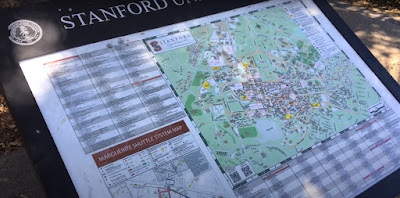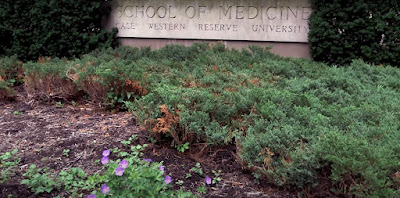How hard to get into Stanford Medical School?
Stanford University School of Medicine is a unique school with outstanding opportunities. Stanford adopts a mission common to many of its peer institutions, namely to train leaders in medicine. A flexible curriculum, an entirely pass/fail grading system, the abundance of research opportunities, and support for numerous extracurricular activities combine to encourage, and even compel, the Stanford medical student to seek much more from a medical education than what is learned in the classroom and clinic.
Graduates rarely seek to just practice medicine, but rather are committed to leadership careers in research, policy, or community service.
The heart of Stanford's unique approach to medical education is its flexible curriculum, designed to allow students every opportunity to expand their experiences. While there are requirements for completion of the preclinical and clinical years, students are able to complete these requirements in any order and in any amount of time they choose (within reason). Most students take advantage of this flexibility through the five year plan, usually by spreading the preclinical requirements over three years, thus making available substantial time to pursue other interests. Other options include spending an extra year during the clinical curriculum, taking a year off, or even spending an extra two or three years pursuing additional degrees.
Research opportunities abound in the medical school and in the main university, in fields from molecular biology to clinical medicine to sociology. The medical center in particular is clearly one of the top few research institutions in the world. Many students serve as teaching assistants for medical school and undergraduate courses. Some pursue experiences in public health, international medicine, or public policy.
Additional course work at the business school, law school, or undergraduate campus is readily available, and some students obtain second degrees in public health, public policy, or health services research. The chances are that appropriate resources are available for students to explore almost any interest they may develop.
What makes the five-year plan possible is the tuition policy; after paying for the equivalent of four years of full tuition, the fifth year is charged at a nominal rate. In fact, spending five years can often be more economical than spending four years, as many research and leaching positions come with substantial stipends and, more important, up to 50 percent tuition remission. Other key elements of the flexible curriculum include an entirely pass/fail grading system (which allows students to study appropriately but not excessively for classwork), options to place out of preclinical courses by passing a final exam equivalent before the course, and a relatively modest number of total preclinical and clinical requirements. While the majority of students do choose the five-year plan, it is not necessary to enjoy the benefits of the flexible curriculum; many students complete the requirements in the traditional four years but are still able to enjoy significant outside experiences.
Preclinical Years
The preclinical curriculum is a mixed blessing. The courses are generally well structured, well developed, and led by outstanding and often internationally famous professors and certainly provide students with a solid base of fundamental knowledge as they enter the clinics; however, there is no denying that students spend their share of long hours in dark lecture halls at early hours of the morning. Stanford medical school has made significant progress in recent years in complementing its reasonably traditional preclinical structure with different types of educational experiences, most important, by introducing clinical medicine and patient interactions from day one of medical school.
The first year can be difficult at times, with daily course work, such as histology, biochemistry, neuroanatomy, statistics, and immunology, designed to test students' ability to remain awake. Then again, general anatomy, completed in the first quarter, with more than 20 hours of laboratory time per week, will be students' most intensive and rewarding academic experience to date. The second and third years become substantially more interesting, built around yearlong courses in physiology, pathology, and pharmacology, filled in by quick little electives such as emergency room procedures, rural medicine, and medical Spanish (and, for many, golf). By the time boards part 1 and clinical rotations roll around, students are well prepared.
Clinical Years
Clinical clerkships are centered on four hospitals: Stanford Hospital and Lucille Packard Hospital for Children are the main academic teaching tertiary/ quaternary centers adjacent to the medical school, Santa Clara Valley Medical Center is the nearby county hospital for the majority of Silicon Valley, and the Palo Alto Veterans Administration (V.A.) Hospital. Kaiser Permanente is also an affiliated teaching institution. Stanford and Packard are beautiful, wellstaffed, and well-supported institutions that provide cutting edge care to the local communities as well as VlPs flown in from around the world.
The Santa Clara Valley Medical Center is considered to be a model for county hospitals in the quality and depth of care. Both the county and V.A. hospitals within the past one to two years have had brand-new main buildings built, significantly improving the resources available at both institutions (not to mention making them much nicer places to work).
If there is a common criticism of Stanford medical school, it is that the clinical experiences for students are not as intensive as they are in many other medical schools with city and county hospitals, although graduates of Stanford who are in various residency programs consistently report that their clinical training is on par or superior to that of their colleagues from other schools.
The clinical requirements are reasonable and leave plenty of time for away clerkships, clinical research, or even international experiences. Electives are available in any field imaginable and allow students close contact with world famous attendings who quickly become mentors and advisers. The required clerkships can be taken in any order and at any time students wish, allowing them, for example, to defer required clerkships in fields in which they are not interested to their last year, leaving them more time for electives in their first clinical year.
For the most part, the environment is supportive and friendly and students find that most house staff members and attendings want students to learn. While some rotations have written exams, they are for a student's benefit only and cannot be used in evaluations.
Students need to do well in their clerkships, however, as the pass/fail system and the lack of exam scores make written evaluations from rotations a very large part of their resideno' application.
Social Life
Students daily lives are centered in Palo Alto, perhaps the model of American suburbia, and the surrounding Silicon Valley, a relatively affluent area with many restaurants, bars, and cultural attractions to keep students busy. Weather permits outdoor recreation year-round.
San Francisco is 45 minutes to the north. Napa Valley, Monterey, and Carmel are all within a 2 hour drive. Lake Tahoe is 4 hours away and offers skiing comparable to Colorado and Utah as well as recreational activities that are particular to Nevada. Tahoe is a frequent weekend destination. Los Angeles and Las Vegas are easily reached by quick and reasonably priced flights.
The Bay Area is one of the most popular areas to live in the country and offers the combination of a comfortable, relaxed, and enjoyable daily life, with an endless list of spectacular diversions for day or weekend trips. With this, however, comes a price; the cost of lixang is high, rents are comparable to San Francisco or Boston, and a car is a necessity.
Day in the Life Stanford Medical School Student
Students receive an outstanding medical education from a top ten school and enjoy life tremendously while they are learning. Stanford medical school is the ideal school for students who want to take advantage of the flexible curriculum and the vast resources to make themselves into leaders of medicine.
Web http://med.stanford.edu/
Web http://med.stanford.edu/




















Comments
Post a Comment